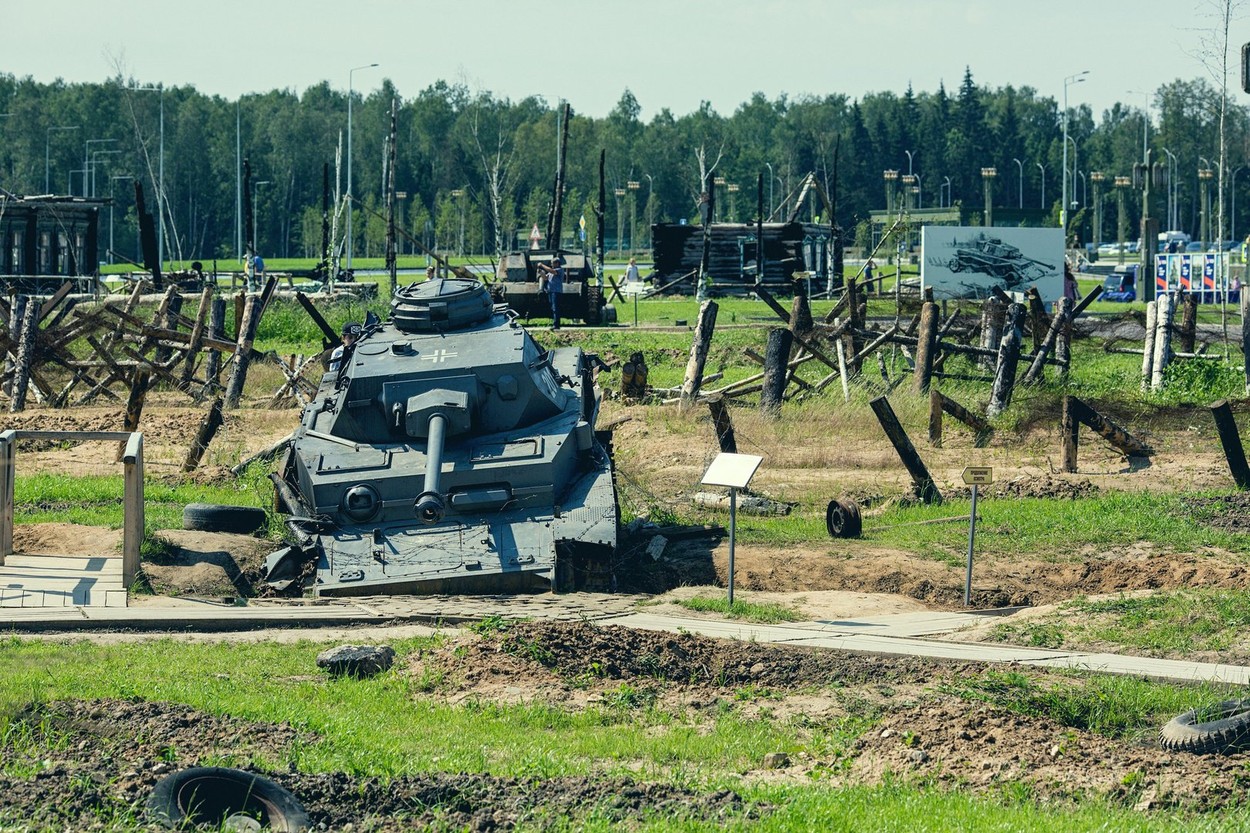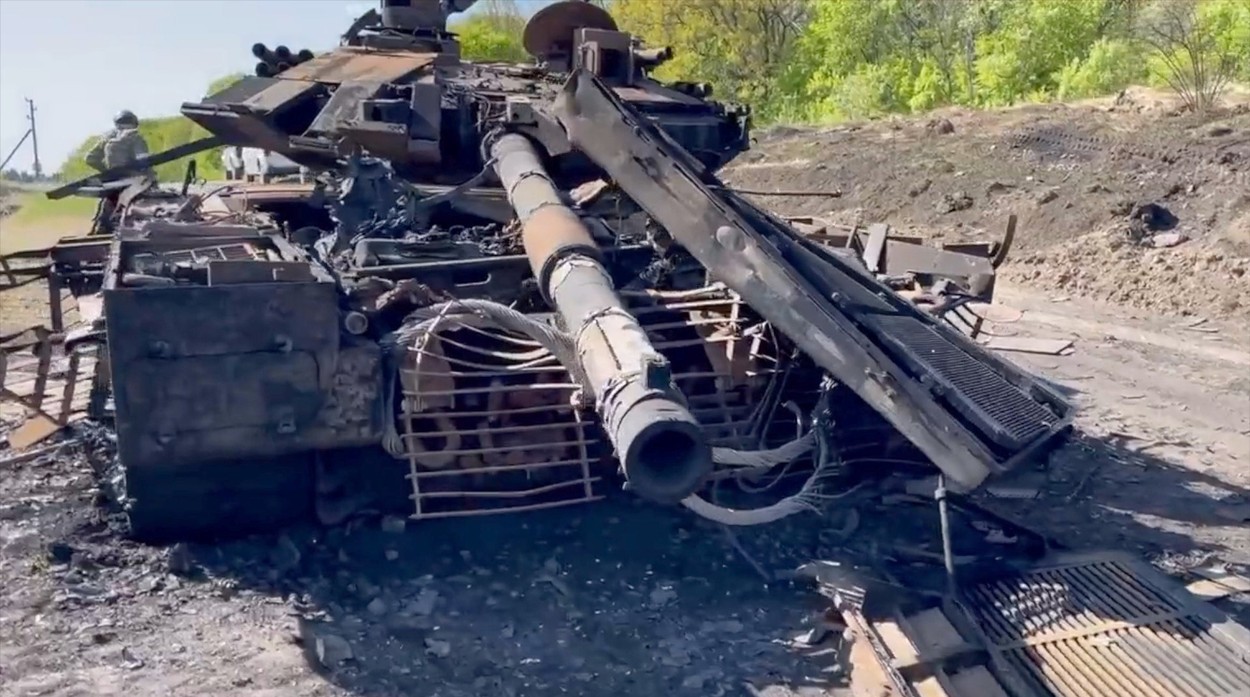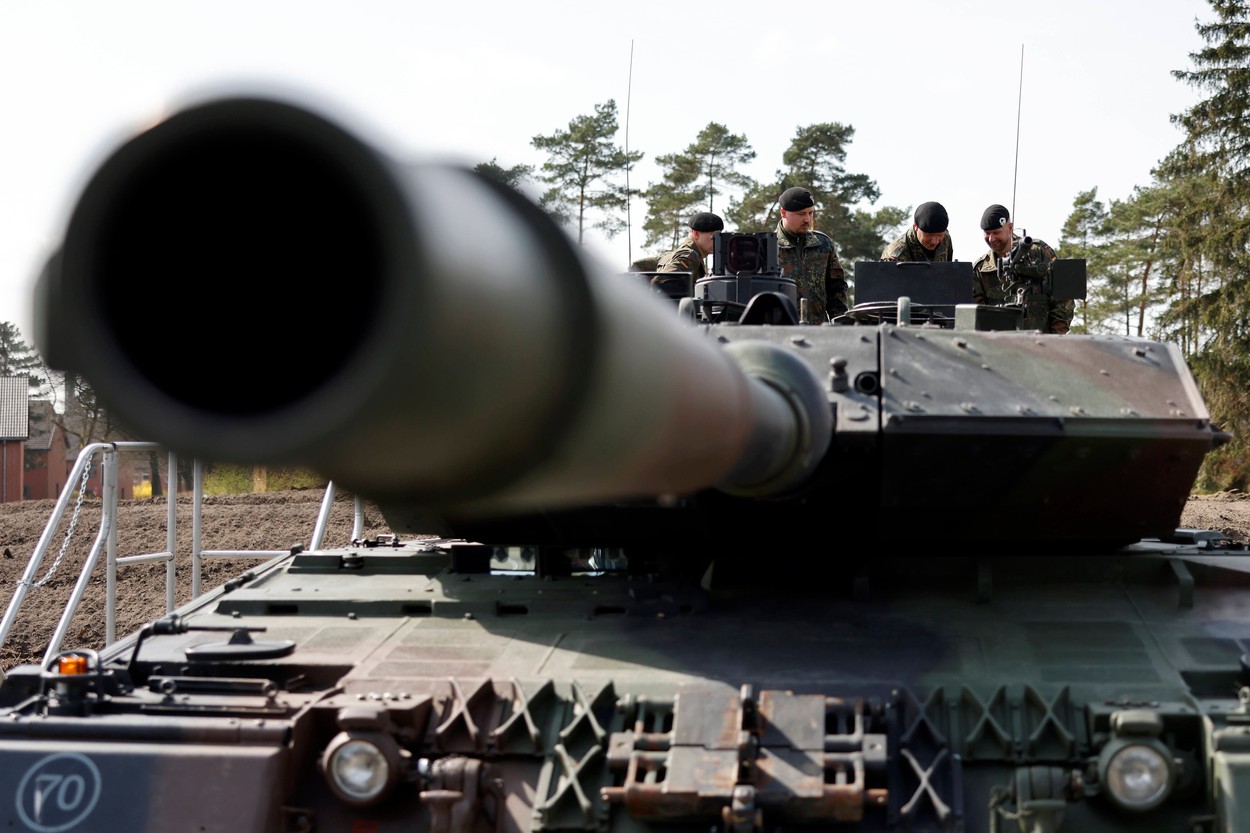
Since last year, at the beginning of the war, Russian armored units have been disappointing. Images of numerous destroyed Russian tanks were published by the mass media and even became the subject of jokes.
They were eliminated quite easily, especially by Ukrainian anti-tank groups already equipped with the famous American FGM-148 Javelin.
Of course, there were also numerous cases when Russian tanks were abandoned due to mechanical malfunctions or even lack of fuel, because it is known that for the Russians the entire war in Ukraine is a logistical nightmare.
How did it get here?
During and after the Cold War, the number of tanks produced in Russia was enormous, far exceeding the production capabilities of its Western competitors. Well, to try to figure it out, you need to do a brief analysis of Soviet, and then Russian tank warfare tactics.
Outdated doctrine for the 21st century
Even during the Second World War, the Russians adopted the idea of throwing waves tanks on the enemy with the obvious intention of defeating him. In this way, they tried to take advantage of the large production capacity of the arms industry.

Reconstruction of the Second World War (Photo: Boris Zhitkov / Alamy / Alamy / Profimedia)
The designs of Russian tanks were never surpassed either in terms of combat capabilities or quality of execution, but they were always simple machines, easy to maintain, and, above all, they had the advantage of being cheap to manufacture, which made it possible to produce them in huge quantities.
Their problem is that in today’s age of technological slavery, winning a fight is no longer about numbers. It is simply impossible to throw waves of armor at the enemy, especially without infantry support.
In order to understand what the problem is, we will try to analyze two cult models of tanks of Soviet production and later modernized, which the Russians use in Ukraine.
The T-72 model, or as an innovative idea, will still be bad
The prototype of this tank was developed starting in 1967 by the Morozov Design Bureau on the basis of the T-62 and T-64 predecessors. At first, he succeeded, having won, compared to the previous ones, the presence of a powerful 2A46M model 125 mm gun with a smooth barrel, as well as composite armor.
In addition, the production cost of the T-72 was half that of the T-64, for example, exactly what the Soviets wanted.
Why are the roads of Ukraine littered with the carcasses of destroyed T-72s?
This tank was designed to be easy to use and maintain by the conscript army that was in the USSR at the time. The problem is that an army of recruits will never be able to perform the complex maneuvers required of tanks.
Yes, it is easy to support, but here too serious problems arose in the conditions of endemic corruption that developed in the last years of the Cold War, but especially in the period after the collapse of the USSR.

Russian T-72 tank in Ukraine (Photo: RIA Novosti / Sputnik / Profimedia)
Another problem with this model is that, being a light tank (41.5 tons), the chassis does not support serious armor upgrades. In addition, ammunition is stored in the sub-turret compartment, which is a big drawback.
At TVD, where it was stationed, the T-72 performed poorly. An eloquent example is the loss of 44 copies of this model during the first Chechen war.
Let’s not forget that here the Russians faced a small and poorly armed enemy. Obviously, the model had improvements such as a thermal imager, but this still did not make the T-72 an effective tank on the battlefield of the 21st century.
T-90, or the pride of the Russian armed forces
The most modern tank model that the Russians use in Ukraine is the T-90. It entered service in 1995 based on the T-72 model. Perhaps that was his problem from the start: the fact that Russian engineers were working with an already faulty launch pad.
- Link: What mistakes did the Russians make when designing their tanks
It was chosen as the starting point for its predecessor, the T-72, because of its simplicity, as well as its low cost of production.
The improvements made are KONTAKT-5 dynamic armor, a KORD model machine gun with a range of up to 2 km, which can be controlled remotely, unlike the T-72.
The T-90 is also equipped with an optical-electronic active protection system SHTORA-1, designed to destroy the laser pointer and laser range finder of anti-tank guided missiles.

The first T-90M tank destroyed by the Ukrainians in May (Photo: EyePress News / Shutterstock Editorial / Profimedia Images)
And yet, why aren’t T-90 convoys standing in the middle of Kyiv?
The answer is simple. First, the Russians failed to provide adequate infantry support for the tanks, although this was vital.
The T-90 is then forced by the automatic launcher to store ammunition in the middle of the turret, making it vulnerable to attacks from above. It is known that tank armor is thinnest on top.
In addition, the T-90 is still vulnerable to missile attacks by anti-tank teams from the famous Javelin.
The SHTORA-1 defense system was supposed to render these anti-tank missiles useless, why is this not happening?
The IRA, as well as SHTORA-1, are designed to warn of targeting the vehicle with such missiles, but the completely unusual ballistic trajectory of the Javelin projectiles, as well as the fact that they are equipped with the ITAS guidance system, make these defense systems somehow redundant.
There were numerous promises about the modernization of the T-90. The lack of funds, and mostly their channeling into the pockets of corrupt Russian generals and officials, significantly prevented this from happening.
The arrival of the Leopard 2 model in Ukraine – will it be decisive?
The first German Leopard 2 tanks have arrived in Ukraine. The Ukrainian military has already been trained in their use. This model enjoys a special reputation, as it is equipped with the most modern defense and offensive systems.

German tank Leopard 2 (Christoph Schmidt / AFP / Profimedia Images)
Leopard tanks are considered heavy tanks weighing 62 tons, but their weight varies depending on the variant. Composite armor of the third generation includes high-strength steel, tungsten and a plastic matrix with ceramic overlays.
All variants feature digital fire control systems as well as highly advanced gun stabilization systems.
What makes it special compared to Russian tanks?
First of all, the military doctrine for which it was built, and later developed. It is able to perform complex and fast maneuvers necessary for armored combat, designed to provide optimal protection for four crew members at the same time.
On paper, the Leopard-2 is not very different from the Russian T-90. However, careful maintenance, timely updates, but above all, the combat tactics for which it was created, make it scary.
- Link: Russian general warns that Leopard tanks are the best in Europe: “They will create a very serious threat”
How it behaves in combat will depend on the number used, as well as the tactical circumstances.
One thing is certain, namely: with the appearance of this model in service, the Ukrainian army will win not only in terms of image, but also now Russian tanks have a real opponent.
Literature:
– Jerchell, Michael – Leopard 2 Main Battle Tank 1979-1998;
– Zaloga, Steven – T-72 main battle tank 1974-93;
– Perret, Brian – Soviet armor from 1945;
– Marsh Gelbart – Tanks: Main Battle Tanks and Light Tanks
Read other articles on this topic written by Andrii Stan:
- “Uranus”, the extremely successful operation of the Russians in Stalingrad / Is the Kremlin trying the same strategy for Kyiv?
- Why the Battle of Bakhmut is remarkably similar to the Battle of Verdun
- Operation “Maritsa” or the real reason why the Germans did not occupy Moscow
- “White shirt attack”, one of the most glorious and crazy Romanian military actions
- The military campaign of the Russians, which was a resounding success. The history of the counteroffensive, which was the basis of the German blitzkrieg
- The battle in which the Russian general sent 11 thousand Romanian soldiers to their deaths
- “Not a step back”: the famous Stalin’s order 227 and blockade special forces
- Battle of Wizna or “Polish Thermopylae”
- The story of Andriy Vlasov, Stalin’s successful general who defected to the Germans: Traitor or anti-communist?
- Who was Stepan Bandera: a hero for Ukraine, a terrorist for Russia/ Putin mentioned in his speech on Victory Day
- Lend-Lease or how the USA helped Russia not to disappear
- The Ukrainian genocide that Russia would like to forget
- Russia’s behavior then and now: from Katyn to Buchi, or how Russian propaganda tries to change history
- The Battle of Turtukaia is one of the most shameful defeats in the history of the Romanian army
- The history of two Chechen wars: Russia “wanted” and then “quick and clean” intervention
- Why the blitzkrieg of the Russians in Ukraine failed
Source: Hot News
Ashley Bailey is a talented author and journalist known for her writing on trending topics. Currently working at 247 news reel, she brings readers fresh perspectives on current issues. With her well-researched and thought-provoking articles, she captures the zeitgeist and stays ahead of the latest trends. Ashley’s writing is a must-read for anyone interested in staying up-to-date with the latest developments.